Remember that new object, COW, named for a strange supernova? We’ve seen four more of these Fast Blue Optical Transits, and new research may even have figured out just how and why they occur. Plus, Crew-4 launches, a bunch of planetary science news, micronovae, and this week in rocket history, we look back at the San Marco program.
Podcast
Show Notes
Late-night launch for Crew-4 mission
Jupiter’s moon Io has dunes!
- Rutgers press release
- “Aeolian sediment transport on Io from lava–frost interactions,” George D. McDonald et al., 2022 April 19, Nature Communications
Greenland structures provide clue for Europan ice
- Stanford University press release
- “Double ridge formation over shallow water sills on Jupiter’s moon Europa,” Riley Culberg, Dustin M. Schroeder, and Gregor Steinbrügge, 2022 April 19, Nature Communications
Exoplanetary atmosphere categorization begins
- ESA Hubble press release
- NAOJ press release
- “Five Key Exoplanet Questions Answered via the Analysis of 25 Hot-Jupiter Atmospheres in Eclipse,” Q. Changeat et al., 2022 April 25, The Astrophysical Journal Supplement Series
NASA extends science missions
- NASA press release
Stellar death just got more lit
- Northwestern University press release
- “Shocked jets in CCSNe can power the zoo of fast blue optical transients,” Ore Gottlieb, Alexander Tchekhovskoy, and Raffaella Margutti, 2022 April 11, Monthly Notices of the Royal Astronomical Society
And now for an entirely new explosion type
- Durham University press release
- ESO press release
- “Localized thermonuclear bursts from accreting magnetic white dwarfs,” S. Scaringi et al., 2022 April 20, Nature
- “Triggering micronovae through magnetically confined accretion flows in accreting white dwarfs,” S. Scaringi et al., to be published in Monthly Notices of the Royal Astronomical Society (preprint on arxiv.org)
This Week in Rocket History: San Marco program
- San Marco 1 info page (NASA)
- San Marco 2 info page (NASA)
- San Marco 3 info page (NASA)
- San Marco 4 info page (NASA)
- San Marco-D/L info page (NASA)
Transcript
Okay, so a rocket launched in the middle of the night, but we’ve got that for you.
We also have a whole slate of planetary science news.
And we’ll look back at an unusual satellite program from Italy in the 1960s.
Oh, and stars are exploding in weird and delightful new ways. Well, not new, but newly understood.
All of this now, right here on the Daily Space.
I am your host Dr. Pamela Gay.
I am your host Erik Madaus.
And we’re here to put science in your brain.

First up, on April 27 at 07:52 UTC, a SpaceX Falcon 9 launched the Crew-4 mission towards the International Space Station (ISS).
Onboard Crew Dragon Freedom were three NASA astronauts – Kjell Lindgren, Jessica Watkins, and Bob Hines – and one ESA astronaut, Italian Samantha Cristoforetti. This was Bob and Jessica’s first flight into space and Kjell and Samantha’s 2nd. As we mentioned yesterday, Freedom is the last new-build Crew Dragon. The booster, 1067, was on its 4th flight – a record for crewed flights.
This mission comes right after the end of the Ax-1 mission also to the ISS. Crew-4 was delayed because Ax-1 was taking up its docking port. Once Crew-4 arrives at the ISS, Crew-3, also on a Crew Dragon, will hand the ISS over to them and their Russian crewmates and come back to Earth.
And for some planetary science news.
Beth’s favorite moon, Io, the smallest of Jupiter’s Galilean moons, has dunes, which is… strange if you think about the fact that Io is an incredibly volcanic world without an atmosphere. And dunes on Earth and on Mars form with wind, which, again, usually requires an atmosphere.
This turns out to have been a long-standing question, as the dunes were originally captured in images taken by the Galileo spacecraft. Those same images also showed a world that is being repeatedly and constantly resurfaced by volcanoes.
That volcanic surface consists of black, solidified lava flows, flowing lava streams, and even ashfall made of frozen sulfur dioxide. Now, a team of scientists led by George McDonald from Rutgers University has used mathematical modeling to find a possible answer for how those dunes came to exist. When the lava flows into the sulfur dioxide under Io’s surface, venting happens. And as McDonald explains: [That venting is] dense and fast-moving enough to move grains on Io and possibly enable the formation of large-scale features like dunes.
Once the team had a possible mechanism and some maths to back them up, they went back to those Galileo images for proof and found that the spacing of the dunes as well as their height-to-width ratios matched what we see in similar dunes here on Earth and elsewhere in the solar system.
This work was published in Nature Communications.
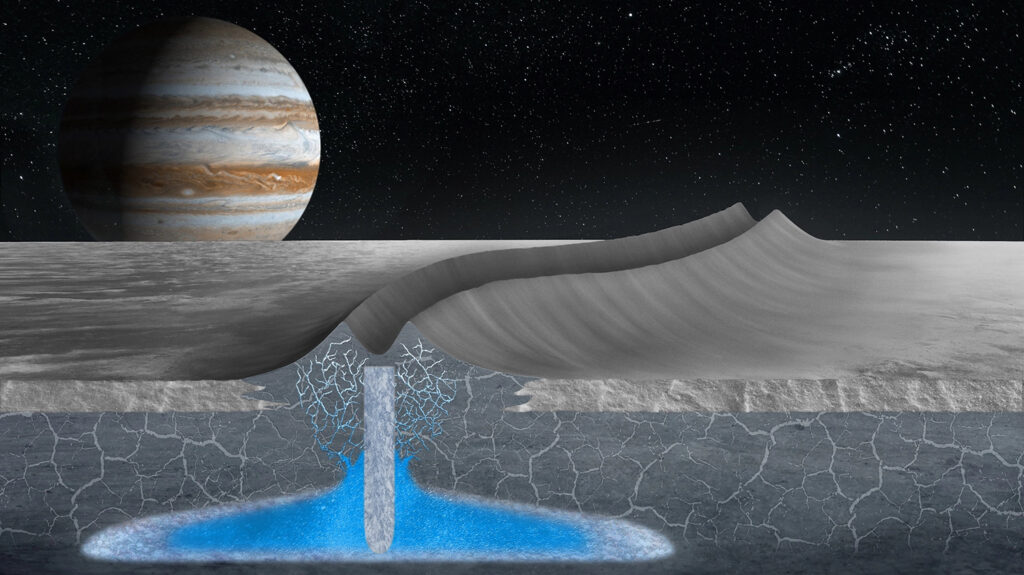
While Io is a volcanic and lava-covered little world, Europa is known as an icy world. It’s another of Jupiter’s Galilean moons, and it’s considered a potential location for life beyond Earth. As such, scientists are always looking for the why of how the ice shell formed, how it cracked, why there are cryogenic geysers, and if any or all of that could contribute to suitable conditions for harboring life.
Since we haven’t (yet) sent a mission directly to Europa – and I won’t talk about upcoming, not-yet-launched missions – we have to look to Earth analogs for clues about the workings of ice on that distant moon. And scientists think they may have found one clue in ice-penetrating radar observations of “double ridge” features in the Greenland Ice Sheet, and their results were published in Nature Communications.
These ridges were not expected, and they’re considered a minor feature here on Earth, but on Europa, they streak the moon. Senior author Dustin Schroeder noted: We were working on something totally different related to climate change and its impact on the surface of Greenland when we saw these tiny double ridges – and we were able to see the ridges go from ‘not formed’ to ‘formed.’
In Greenland, enough data was collected that researchers observed the formation of a double ridge that occurred, and here I quote from the press release: …when the ice fractured around a pocket of pressurized liquid water that was refreezing inside of the ice sheet, causing two peaks to rise into the distinct shape.
Lead author Riley Culberg explains: In Greenland, this double ridge formed in a place where water from surface lakes and streams frequently drains into the near-surface and refreezes. One way that similar shallow water pockets could form on Europa might be through water from the subsurface ocean being forced up into the ice shell through fractures – and that would suggest there could be a reasonable amount of exchange happening inside of the ice shell.
And when we say “exchange”, we’re talking about how nutrients from impacts could accumulate on the surface and then end up in the subsurface ocean. This all means that the ice shell has quite a few dynamic processes than lend themselves to habitability.
Space whales, anyone?
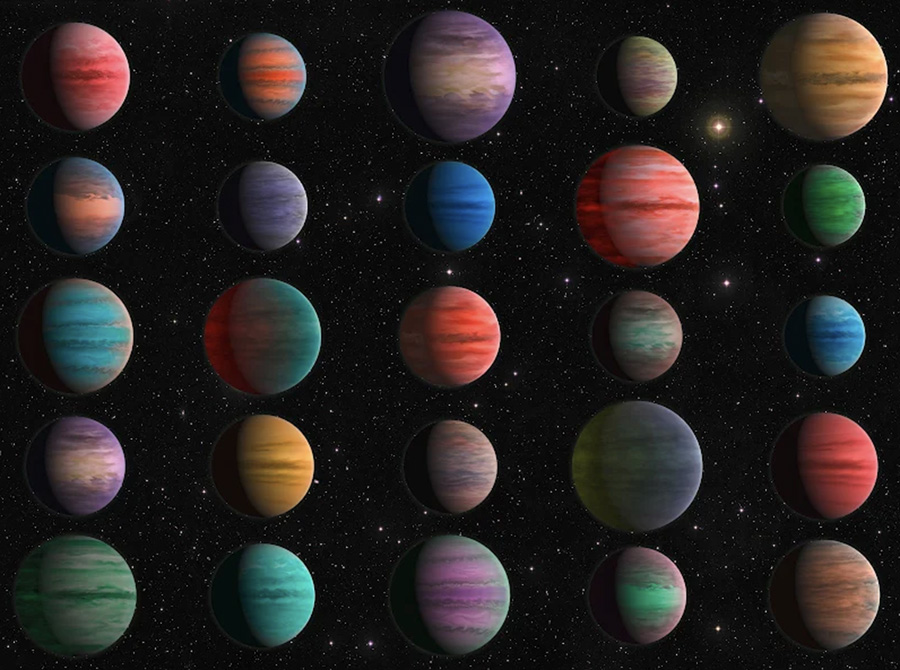
Not every world we talk about in this show is, of course, in our own solar system. There are over 5,000 confirmed exoplanets out there in our galaxy, and every day, we learn more and more about them. The trend these days is pushing the field of exoplanetary atmosphere categorization in amazing directions, what with advances to ground-based telescopes, new uses of space telescopes, and even, maybe, possibly (I am really tired of waiting) a new space telescope.
And this week, researchers released a new paper in The Astrophysical Journal Supplement Series that presented a catalog of 25 exoplanets observed using hundreds of hours of observing time on both the Hubble and Spitzer space telescopes. Those 25 worlds are all considered hot Jupiters – those gas giants that orbit very close to their parent stars, heating up to wild temperatures.
Awesomely, the team found common threads among the properties they analyzed, including thermal profiles and chemical abundances. For one characteristic, they look at “thermal inversion”, where an atmosphere that generally traps heat has a temperature that increases as you get deeper into that atmosphere…until it doesn’t increase. So sometimes, there might be a layer that is warmer than the layer below. Ozone does that here on Earth.
Of the hot Jupiters that had a thermal inversion layer, there was also evidence for hydrogen anions and metallic oxides. And then the planets that didn’t have an inversion layer also didn’t tend to have those chemicals. While correlation doesn’t equal causation, those metallic components are really good at absorbing stellar light, which would increase the temperature around those compounds.
Just one more paper bringing us closer and closer to understanding planetary formation. Exciting times are ahead, everyone.
But don’t get all caught up in the new and shiny. Some older planetary missions are still doing amazing work. Erik?
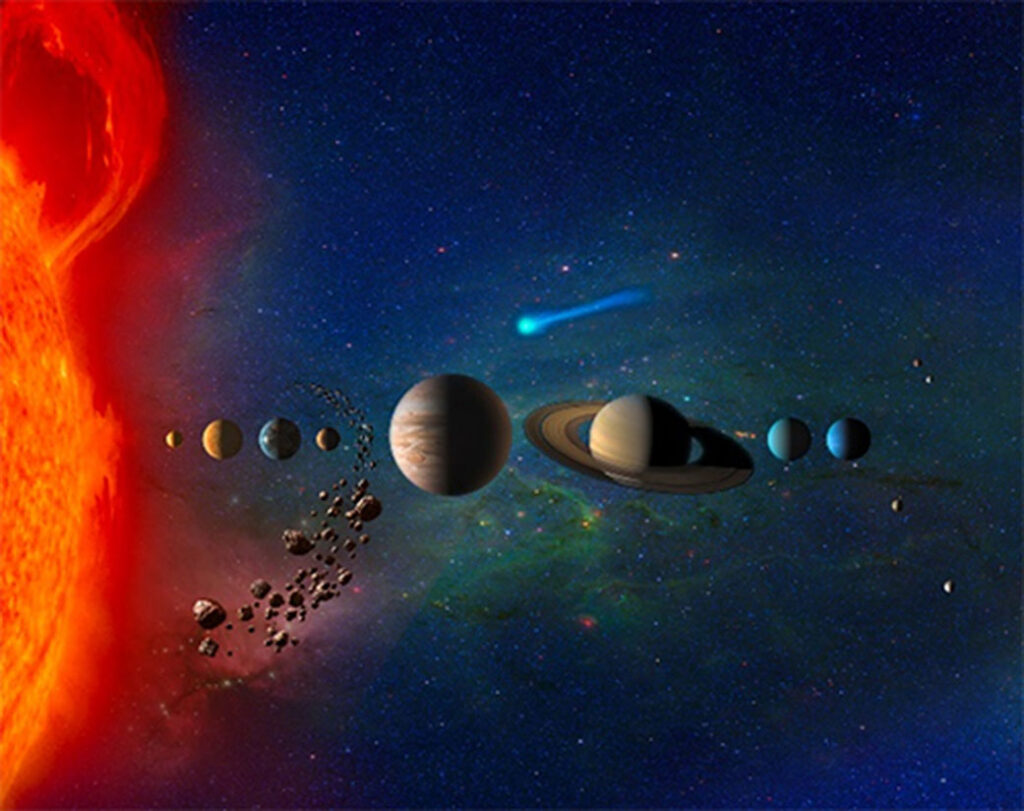
Yesterday, we mentioned the extension of the OSIRIS-REx mission, but seven other planetary science missions are also getting extended.
According to NASA, most of the missions will get three-year extensions, but OSIRIS-REx will get a nine-year extension to do OSIRIS-APEX.
The InSight lander on Mars will get an eight-month extension to the end of 2022, provided its electrical power lasts that long. Its solar panels are currently mostly covered in dust and it might not last until the end of the year unless a “dust devil” clears them off.
Mars Odyssey got a three-year extension, but it is running out of propellant after 21 years in Mars orbit and might end sooner than that.
The Mars Reconnaissance Orbiter is getting a three-year extension, though it will continue without its CRISM spectrometer since that instrument’s cryocooler broke after sixteen years in Mars orbit. Beth is incredibly brokenhearted about that loss.
MAVEN will continue its mission, observing the changes to Mars’s atmosphere through a full solar cycle. Curiosity is getting a three-year extension to continue exploring Mount Sharp. The Lunar Reconnaissance Orbiter and New Horizons are also each getting three-year extensions.
So we have at least another three years of data being collected at Mars from almost everything NASA currently has on or orbiting the red planet, plus a few other treats around the solar system. We’ll definitely look forward to bringing you all that science news as it is published.
And now, Pamela is going to turn our attention to stars that go boom with varying levels of power.
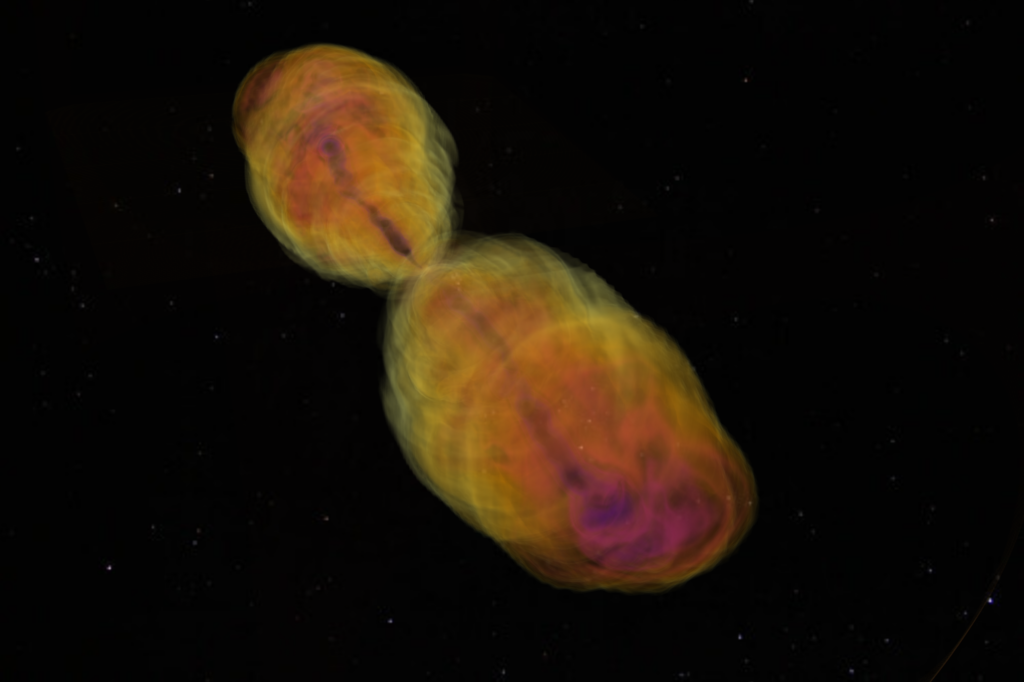
For better or worse, astronomers anthropomorphize pretty much everything in the universe. When we discuss how stars form, generate energy, and eventually flicker out, we assign these phases names like stellar birth, the star’s life cycle, and stellar death.
And, to be entirely frank, a whole lot of energy goes into understanding birth and death because these two parts of a star’s life are both the most beautiful and the most complicated, and who among us can really walk away from a captivating puzzle?
One of the newer puzzles to hit the scene is the Fast Blue Optical Transit or FBOT. First discovered in 2018, the most famous of these events was initially cataloged as SN 2018cow, or “The Cow”. Characterized by their abundance of blue and ultraviolet light and extremely brief appearance, these flashes are substantially brighter than a normal supernova and seem to require an explanation other than “A massive star collapsed and exploded its atmosphere in a tremendous flash of light that then cooled and expanded.” SN 2018cow was re-cataloged as AT (Astronomical Transient) 2018cow, and the search for an explanation began. Since its discovery, four more Fast Blue Optical Transients have been spotted.
And now, we may have a theory to explain what is going on. This work is published in Monthly Notices of the Royal Astronomical Society and led by Ore Gottlieb.
Massive stars were known to die in a few different ways. Beyond supernovae, there are also kilonovae that briefly flare out in gamma rays as compact stars, like neutron stars or when a neutron star and black hole merge. Then there are Long Gamma-Ray Bursts which are some weird mutant, extremely energetic explosion that involves a star with no hydrogen.
FBOTs have hydrogen but are brighter than normal supernovae, suggesting they could be massive stars, but ones that still have hydrogen. When the collapsing star forms jets, those jets of energy get absorbed by the hydrogen cocoon. Over time, that energy is re-released.
As Gottlieb explained: Basically, the star would be too massive for the jet to pierce through. So the jet will never make it out of the star, and that’s why it fails to produce a GRB. However, in these stars, the dying jet transfers all its energy to the cocoon, which is the only component to escape the star. The cocoon will emit FBOT emissions, which will include hydrogen.
While the theory matches observations over a variety of wavelengths of light, the number of examples it has to match is few, and there may be details we’re missing. I feel this work is the start of solving this puzzle, but as Gottlieb further explains: This is a new class of transients, and we know so little about them. We need to detect more of them earlier in their evolution before we can fully understand these explosions.
From supernova to kilonova, to Fast Blue Optical Transients which are apparently also a nova, we now turn to micronova.
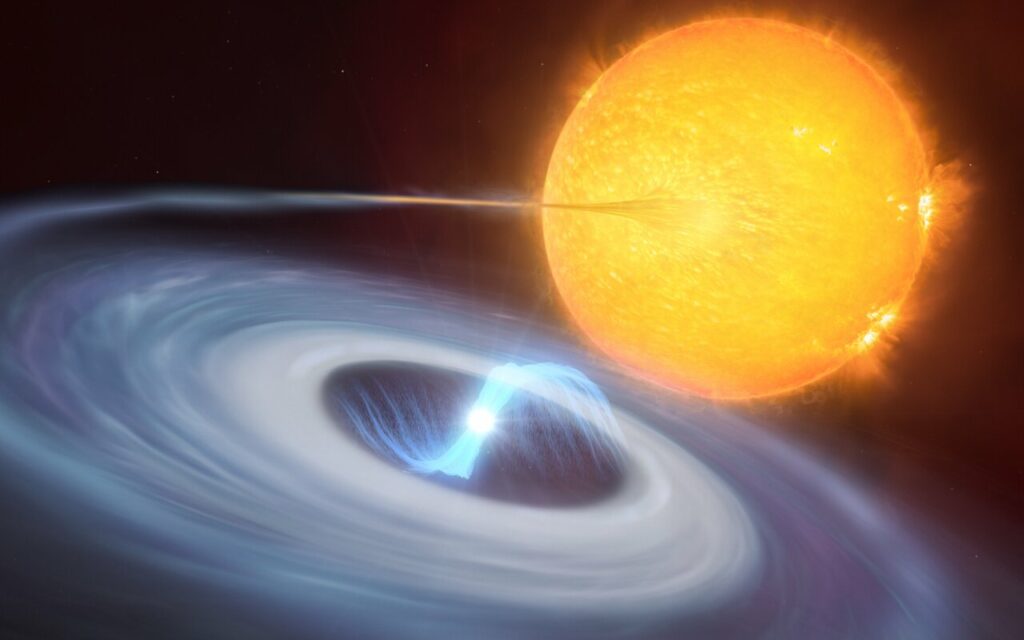
One of the final forms stars can take is a white dwarf. These are objects roughly the mass of the Sun that are compressed down to something more like the size of the Moon, and at this density, they have a powerful surface gravity. If you tried to stand on one, you would be compressed to a film of atoms on the star’s surface.
Don’t stand on stars, people. Just don’t do it.
In addition to being a creative way to compact people while killing them with gravity, white dwarfs also seem to make a hobby of letting off thermonuclear blasts with physics that’s not all that different from nuclear weapons. Nuclear bombs work, very roughly, by using shaped charges to compress fissionable material until a thermonuclear explosion occurs. The stuff in nuclear bombs is relatively safe as long as it doesn’t get scrunched together. Well, the gravity on the surface of white dwarfs can do the same thing with a little help and from magnetism. These white dwarfs are stealing hydrogen fuel from their neighbor stars, funneling it along their magnetic fields to their polls, and there it explodes once it hits a critical mass.
The TESS telescope has now seen four different events where several hour-long blasts have occurred. This work is published in Nature and led by Simone Scaringi.
From things that go boom in the night, we now turn to the controlled explosion that is modern rocketry. Up next, Erik brings us this week in rocket history.
This Week in Rocket History
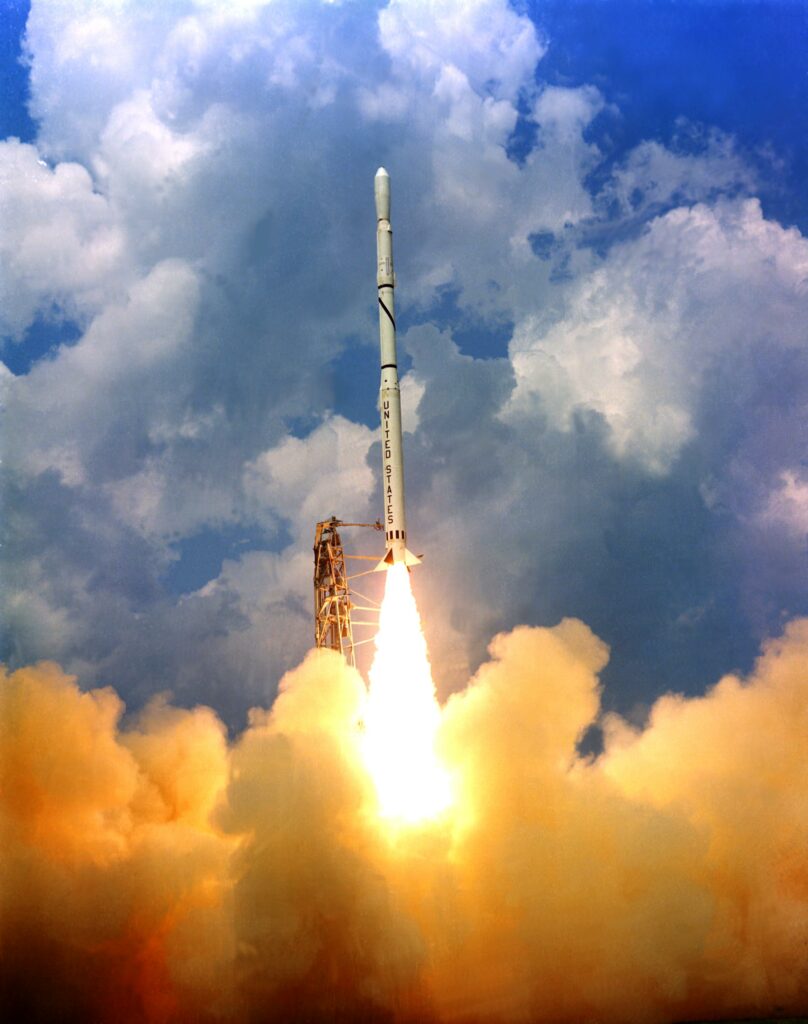
Rockets are typically launched from stationary pads on solid ground or, in rare cases, from planes. Even rarer still, rockets can launch from offshore barges, as the San Marco satellites did, and they are the subject of This Week in Rocket History.
In the 1960s, Italy wanted a satellite of its own but did not have the experience in making or launching orbital rockets. So, they worked with NASA to build a launch pad on a barge for an American rocket, the Scout, which would launch Italian satellites. San Marco 1 was launched from Wallops in Virginia, but starting with San Marco 2, the launches would be conducted from the barge, which was located roughly on the equator in the Indian Ocean just off the coast of Kenya.
San Marco 2 was launched by Italy on a Scout B rocket on April 26, 1967. San Marco 2 did not have solar panels to generate electricity, instead relying entirely on batteries. The satellite did have four solar cells but only as a means of measuring satellite attitude, not to generate electricity.
Compared to San Marco 1, San Marco 2 had several upgrades, including adding a radio beacon and a redesigned battery and command transmitter, which failed on San Marco 1. The satellite weighed 129.3 kilograms and was a simple sphere with five antennae, and controlled its orientation by spinning. This shape was to make its primary mission – analysis of the atmosphere – easier by providing a constant cross-section as it moved forward in its orbit, which was the main reason why it lacked solar panels.
On August 14, 1967, the satellite ran out of power and reentered the atmosphere on October 14, 1967.
Between 1967 and 1988, the Italian Space Agency launched San Marco 3, 4, and 5 to continue the missions of 1 and 2, namely measuring the atmosphere at 200-kilometer altitude.
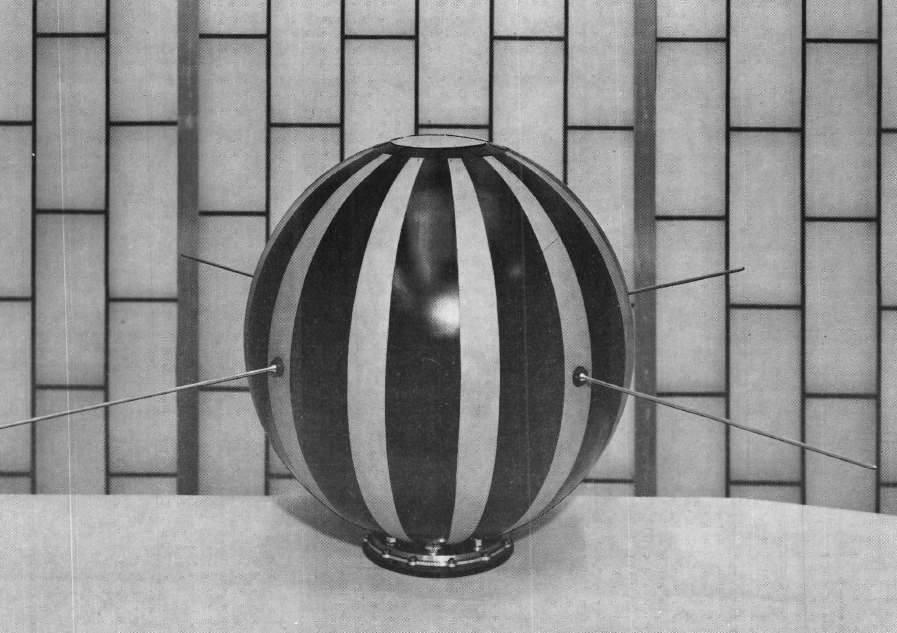
San Marco 3 introduced a new satellite design. The basic shape was the same, but the internal structure was different. To accurately measure atmospheric drag, the spherical spacecraft was hollow with another sphere on the inside that connected to the outside shell. The spacecraft measured the force using several arms connecting the spheres to determine atmospheric drag. San Marco 3 also had several instruments to directly measure the drag, including a mass spectrometer, and other instruments to measure the density of different atmospheric components.
San Marco 3 also improved on the basic design of the spacecraft by adding an attitude and spin control system. Spinning swept the different instruments through the space around the satellite to collect data, and the new control mechanism made this easier and more consistent, resulting in better data.
San Marco 3 was launched in 1971 and continued the monitoring of the Earth’s atmosphere.
Launched in 1974, San Marco 4 was similar to 3 but added two additional instruments to further its atmospheric mission. San Marco 3 and 4 were also the first in the series to have solar panels.
The last San Marco mission, San Marco 5, was launched fourteen years after 3, in 1988. It was the largest of the San Marco satellites and had the most complicated mission. Its goal was to “explore the relationship between solar activity and thermosphere-ionosphere phenomena.” It did this with the same Drag Balance System as its predecessors and added a Wind and Temperature Spectrometer, Airglow Solar Spectrometer, and Electric Field Meter. The spacecraft used magnetic torque to control its spin rate and Sun and horizon sensors to control attitude.
San Marco 5’s mission ended on December 6, 1988, when it reentered the atmosphere.
Statistics
And now, for some statistics.
The number of toilets in space is eight: four on the ISS, one on Soyuz MS-21, 1 on Crew Dragon Endurance, one on the Crew Dragon Freedom, and one on Tianhe.
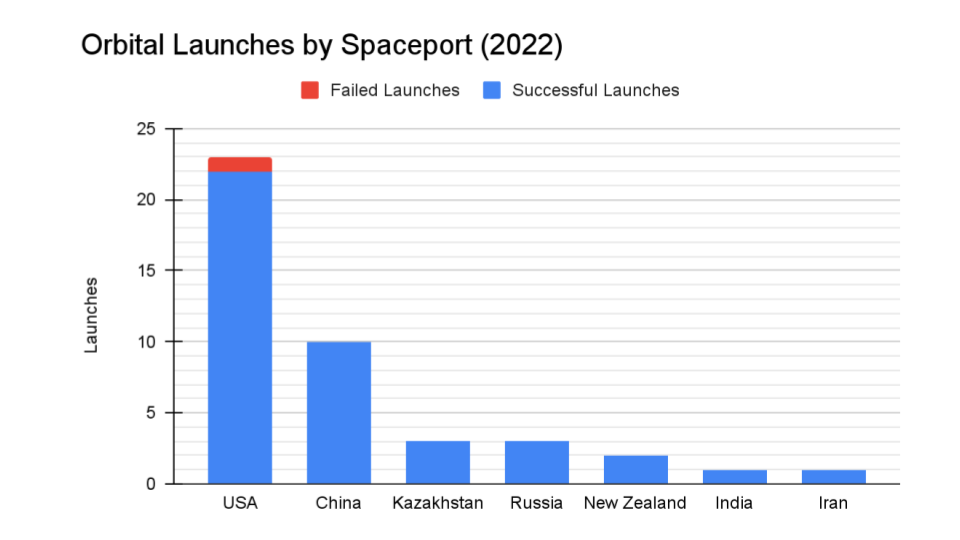
We keep track of orbital launches by launch site, also called spaceport. Here’s that breakdown:
USA 23
China 10
Kazakhstan 3
Russia 3
New Zealand 2
India 1
Iran 1
From those 43 launches, a total of 695 spacecraft were put into orbit.
Your random space fact for this week is that the private astronauts aboard the Ax-1 mission used Caramel, the doggy mascot of The Montreal Children’s Hospital Foundation, as their rather adorable zero-G indicator.
This has been the Daily Space.
You can find more information on all our stories, including images, at DailySpace.org. As always, we’re here thanks to the donations of people like you. If you like our content, please consider joining our Patreon at Patreon.com/CosmoQuestX.
Credits
Written by Pamela Gay, Beth Johnson, Erik Madaus, and Gordon Dewis
Hosted by Pamela Gay, Beth Johnson, and Erik Madaus
Audio and Video Editing by Ally Pelphrey
Content Editing by Beth Johnson
Intro and Outro music by Kevin MacLeod, https://incompetech.com/music/


 We record most shows live, on Twitch. Follow us today to get alerts when we go live.
We record most shows live, on Twitch. Follow us today to get alerts when we go live.